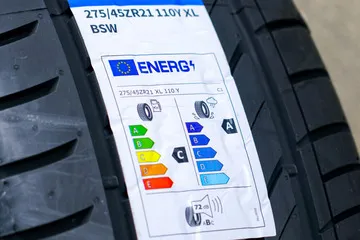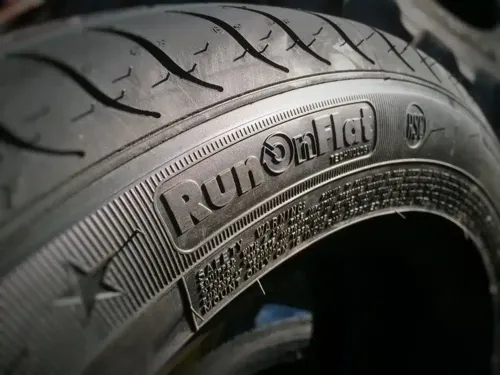What does XL mean on a tyre?
Learn what XL means on a tyre and how extra load tyres differ from standard tyres.
Posted on

If you’ve ever shopped for tyres or examined your car’s tyre sidewall, you might have come across the term “XL”. But what does XL mean on a tyre, and how does it affect your vehicle’s performance? In this guide, we’ll explain what XL tyres are, how they differ from standard tyres, and when you might need them.
What Does XL Mean on a Tyre?
XL stands for “Extra Load”, and it indicates that the tyre is designed to carry heavier loads than a standard tyre. XL tyres have reinforced sidewalls that allow them to handle more weight, making them suitable for vehicles that carry heavy loads or experience additional stress due to specific driving conditions.
Despite what it may seem, XL doesn’t mean the tyre is physically larger than other tyres. It simply refers to the tyre’s load-carrying capacity.
How Do XL Tyres Work?
Extra Load (XL) tyres are built with reinforced sidewalls, which help them support more weight without compromising performance. These reinforcements help the tyre maintain its shape under heavy loads and during high-speed driving, which is why XL tyres are often recommended for certain vehicles like SUVs, trucks, and even some high-performance cars.
Benefits of XL Tyres
There are several advantages to choosing XL tyres for your vehicle, depending on your driving needs:
1. Increased Load Capacity
The primary benefit of XL tyres is their ability to handle more weight. This makes them ideal for:
- Heavier vehicles: Such as SUVs, vans, and trucks, which often carry more weight than smaller cars.
- Vehicles carrying extra cargo: If you frequently haul heavy loads, use roof racks, or tow trailers, XL tyres provide the extra support needed to maintain safety and performance.
2. Better Stability at High Speeds
Because of their reinforced sidewalls, XL tyres offer improved stability at higher speeds. This makes them a popular choice for performance vehicles, especially those that require extra load-bearing capabilities while maintaining optimal handling and cornering.
3. Enhanced Durability
XL tyres are generally more durable than standard tyres, thanks to their reinforced construction. They are better suited for rough roads, heavy loads, and driving in challenging conditions. The extra strength helps reduce wear and tear, giving you a longer-lasting tyre.
4. Safer Under Load
Using tyres that can’t handle the load of your vehicle can lead to tyre failure, especially at high speeds. With XL tyres, you’re adding an extra layer of safety, ensuring that your tyres can support the weight they need to, reducing the risk of blowouts or other issues.
When Should You Use XL Tyres?
Not every vehicle requires XL tyres, but there are certain situations where they are highly recommended:

1. Driving Heavier Vehicles
If you own an SUV, van, or truck, chances are your vehicle could benefit from XL tyres. These vehicles typically have higher load demands, whether from their own weight or the cargo they carry. Check your vehicle’s manual to see if it recommends XL tyres for your specific model.
2. Towing or Hauling
If you frequently tow trailers or carry heavy loads in your vehicle, XL tyres are a smart choice. The extra load capacity ensures your tyres can handle the added weight without compromising safety or performance.
3. Performance Vehicles
For high-performance vehicles that require precise handling and stability at high speeds, XL tyres provide the reinforcement needed to maintain control during aggressive driving or cornering.
4. Rough or Challenging Terrain
If you regularly drive on rough roads or off-road, XL tyres can offer extra durability and protection. Their reinforced structure can better withstand the impacts and stresses of challenging terrains.
Are XL Tyres Compatible with My Vehicle?
Before fitting XL tyres to your vehicle, it’s important to check whether your vehicle is compatible. Some cars are specifically designed to use standard load (SL) tyres, while others may require the extra load capacity of XL tyres.
To determine if your vehicle can use XL tyres, check:
- The vehicle’s manual: It will list the tyre specifications, including whether XL tyres are recommended or required.
- The tyre placard: This can often be found inside the driver’s side door jamb and will provide the recommended tyre load rating.
XL Tyres vs. Standard Tyres
So how do XL tyres compare to standard tyres? Let’s break down the differences:
| Feature | XL (Extra Load) Tyres | Standard Tyres |
|---|---|---|
| Load Capacity | Can handle heavier loads due to reinforced sidewalls. | Designed for regular vehicle loads. |
| Durability | More durable, suitable for tough conditions or rough roads. | Standard durability for regular use. |
| Performance | Better stability at high speeds or when carrying heavy loads. | Suitable for everyday driving at regular speeds. |
| Cost | Generally more expensive due to added reinforcement. | Typically cheaper than XL tyres. |
If your vehicle doesn't carry heavy loads or experience rough conditions, standard tyres may be a more cost-effective option. However, if your driving demands extra support and durability, XL tyres provide added safety and performance.
Are XL Tyres More Expensive?
Yes, XL tyres are generally more expensive than standard tyres because of their reinforced construction and increased load capacity. However, the benefits of increased durability, stability, and safety may make them a worthwhile investment, particularly if you frequently carry heavy loads or drive a heavier vehicle.
Can I Replace XL Tyres with Standard Tyres?
It’s not recommended to replace XL tyres with standard tyres if your vehicle requires XL tyres. Standard tyres won’t be able to handle the same weight, and using them could compromise your vehicle’s safety and performance.
If your vehicle originally came with XL tyres, it’s best to stick with them when replacing your tyres to ensure optimal performance, safety, and handling.
Conclusion
XL tyres, or Extra Load tyres, are designed to carry heavier loads than standard tyres, making them ideal for vehicles like SUVs, vans, trucks, and performance cars. These tyres provide increased durability, stability, and safety, especially when your vehicle is loaded with extra weight or driven at high speeds.
Before choosing XL tyres, check your vehicle’s specifications to ensure compatibility. While they may come at a higher cost, XL tyres are often a better choice for heavy vehicles or demanding driving conditions, offering added performance and peace of mind.










